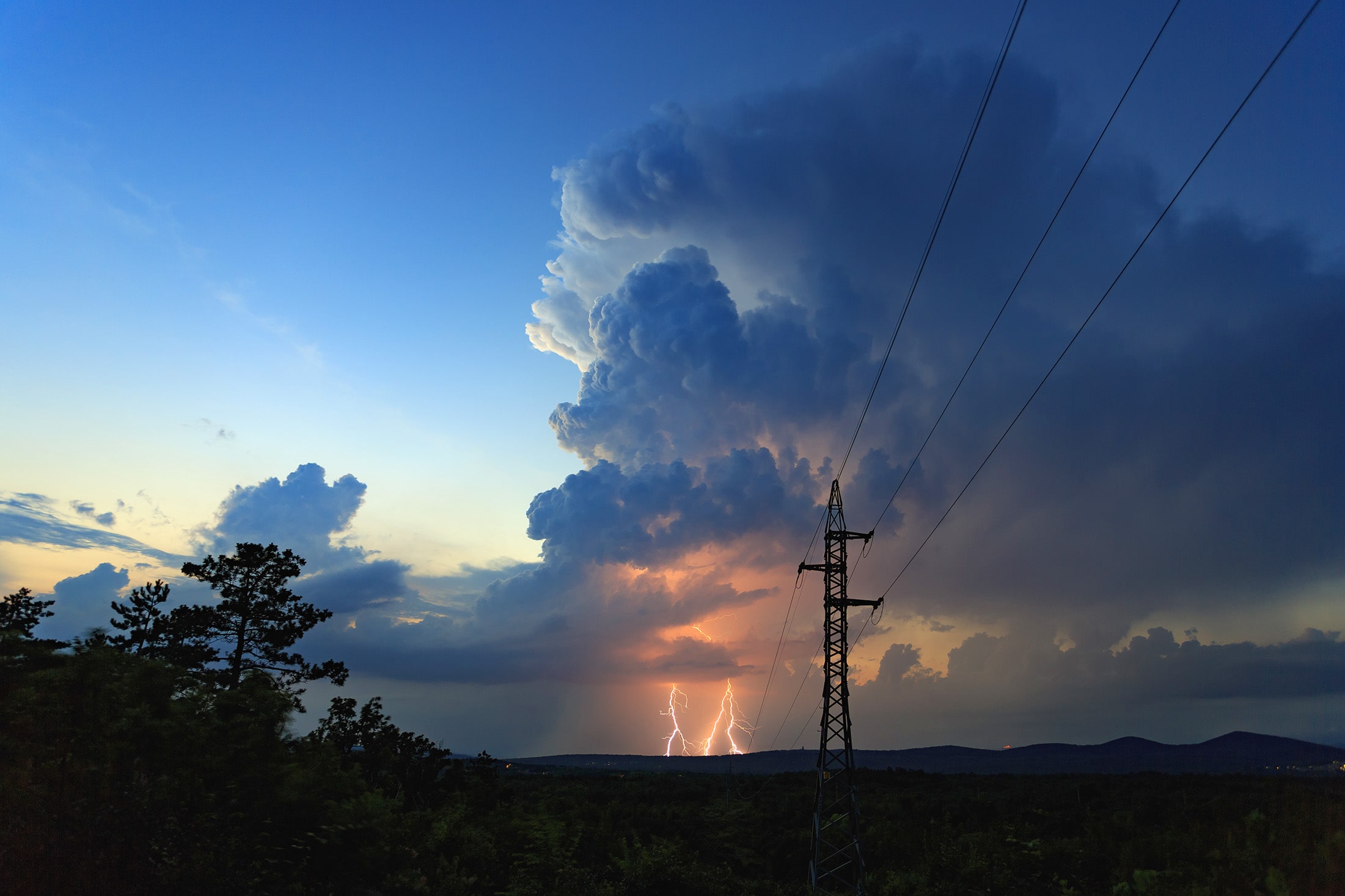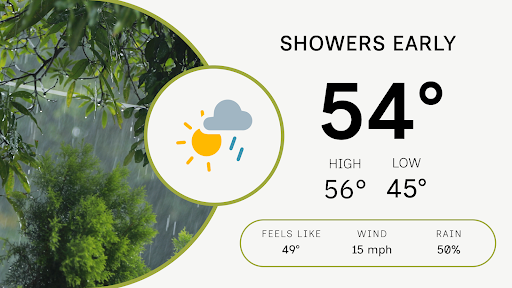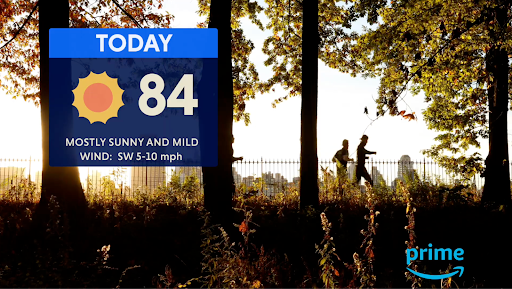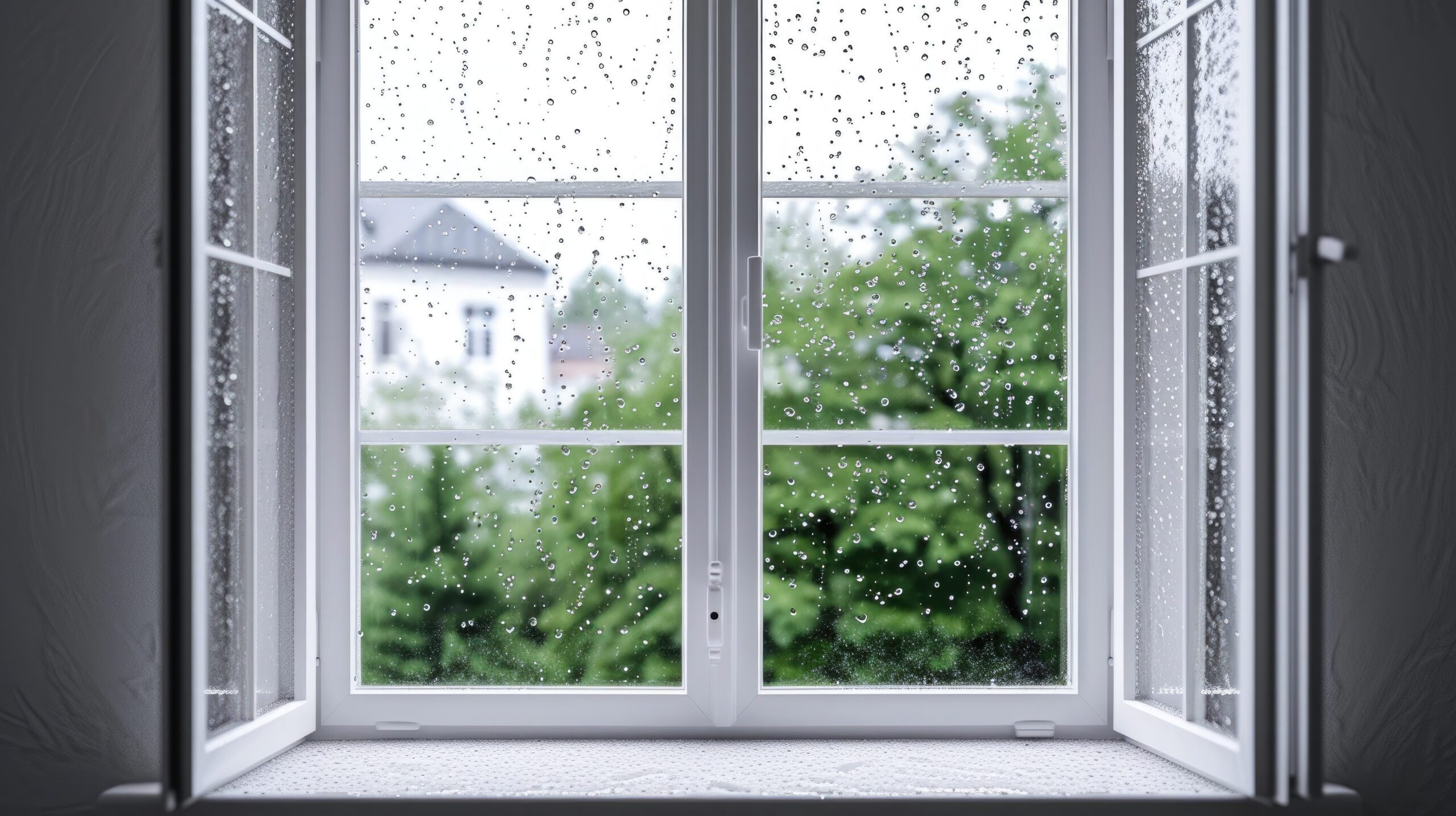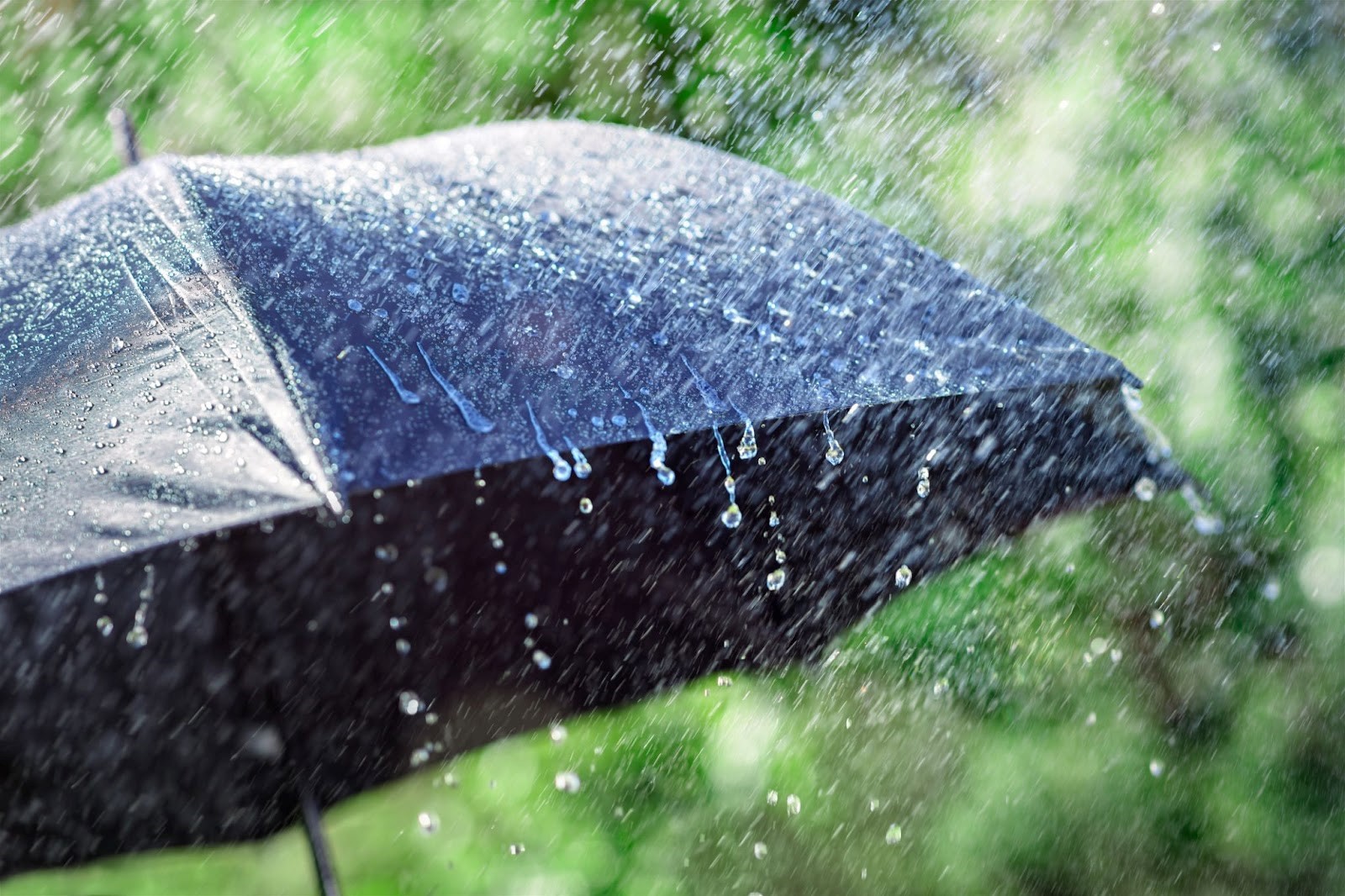Weather intelligence for the future: Crafting a strategic enterprise approach to changing environmental conditions
Continue readingToday’s broadcasters are often creating material for a wide range of platforms including linear television, social and OTT. Automated content helps broadcasters and creators publish news faster, while delivering more content across various channels.
However, broadcasters need to go beyond simple automation strategies of reposting their content from one platform to another. Each channel should have information and updates that are tailored to the needs of the viewer. Automated content also should not feel cookie-cutter or obvious to the viewer. The form of content still needs to contain storytelling techniques and the personalities behind the brand.
For many broadcasters, weather alerts are a great place to begin with automated content. Automated weather forecasts allow companies to share updates to keep viewers informed, while broadcasters create more in-depth videos. Standardized radar loops for snow and rain can also be engaging for viewers. Convenient, simple to employ, and highly useful for both broadcasters and consumers alike, automated weather updates are a critical part of any good broadcast strategy.
That’s why it’s important to discuss the ins and outs of automated weather forecasting, including how it works and some of its most common use cases.
Let’s dive in.
What is an automated weather forecast used for?
Today, automated weather forecasting focuses on both everyday weather forecasting and severe storms. It can be applied in a variety of ways across various channels, including OTT and linear TV.
Everyday forecasts
The most common use case of automated weather forecasts is for everyday weather. This includes most lifestyle content, such as day-by-day weather, humidity and pollen readings, and so forth. These forecasts are what your viewers tune in for, so it’s important to accurately highlight what their day will look like in an engaging way.
Complement to storytelling
Automated weather forecasts do not erase the need for storytelling but instead work to complement it. Automated content on its own can cause viewers to tune out, but with an engaging voice from your meteorologist, it can work to boost viewer attention and provide a way to get weather information out sooner. Storytelling is an extremely powerful tool in weather broadcasting, and automated weather forecasting content allows your brand room to speak on what’s most important to your viewers.
Severe weather alerts
During a severe storm event, automated weather stations use special, highly sensitive instruments to track rapidly changing weather and provide updates without putting someone in the field. This is an excellent and potentially life-saving way for broadcasters to convey severe weather data to viewers and issue severe weather alerts.
What are the benefits of automated weather forecasts?
There are many benefits that automated weather forecasts can bring to the newsroom. Below are a few:
Low maintenance
Automated weather forecasts do not require additional staff to set up or maintain, which frees up your team to focus on other high-demand tasks, helping to streamline the broadcast workflow.
Accuracy
The Weather Company is the world’s most accurate forecaster overall. With our tools, your broadcasts will have up-to-date and accurate automated weather forecasts.
Safety
Automated weather forecasts keep meteorologists out of the field, which is critical during severe weather events that are too dangerous for meteorologists to film from. In turn, these emergency weather alerts help keep viewers safe and informed.
Up-to-date viewers
By automating weather forecast reports, it’s easier to keep viewers up-to-date and informed. Since time is of the essence when it comes to weather reporting, these videos can be published faster, while staff works on additional reports or videos. In cases of severe weather, your team can geofence these updates to reach affected viewers when they need these updates most.
Engagement
Weather influences every aspect of our lives. As a result, companies can benefit from higher engagement rates from viewers. Ashton Altieri from CBS Colorado noted that weather content drove high engagement rates across their OTT platform, with viewers averaging 30 minutes or more.
Revenue and monetization opportunities
Since your team can post content simultaneously across platforms, you will be able to create new monetization opportunities.
Best practices for automated weather forecasting
Interested in incorporating automated weather forecasting into your broadcasts? Here are four best practice recommendations:
1. Incorporate lifestyle content
The primary benefit of automated weather forecasts is that they’re convenient, real-time and accurate. Want to make them even more beneficial for your viewers, though? Incorporate some lifestyle content alongside your automated weather broadcasts.
Based on our Magid research, 82% of people surveyed were interested in health-related news via a streaming service.** Allergy information is a great example of this. It’s relevant when there isn’t rain and spans three seasons but can also include a mix of other content. For example, broadcasters can show a daily pollen index, giving advice on what people with allergies should be aware of when going outdoors. Alternatively, you may include news on a beach forecast with the weekend UV index. Additionally, your broadcast can provide a ski forecast with daily temperatures and wind conditions that can help your viewers decide when they should plan a ski trip.
With that in mind, add some lifestyle content to your next automated weather broadcast, being careful to tailor the content to the considerations of the specific season or weather event.
2. Use attention-grabbing headlines
While this seems simple, it’s one of the most important ways to enhance the value of your automated weather forecasting. To increase the visibility of your broadcasts and make them more digestible for your viewers, use strong, attention-grabbing headlines that accurately portray the content of the broadcast and its importance to viewers. It’s important to also change the headlines from time to time so that these don’t feel automated. Here are further tips for crafting engaging headlines:
- Don’t give away the answer unless you’re reporting severe weather
- Avoid being cookie-cutter and using similar headline structures
- Call out specific events by name
- Aim for around 50 characters
3. Stay consistent with your brand
Remember to prioritize brand consistency as you incorporate your automated weather forecasting reports. The meteorologist is the brand for your weather updates. As a result, all automated alerts should use the meteorologist’s voice and blend seamlessly with your other broadcast content. Keeping a strong synergy between broadcasts can help improve viewer loyalty in the long run by providing consistency.
4. Be authentic
Last but not least, make your automated weather forecasts as authentic-looking and helpful as possible. It should not be obvious to viewers that the content was automated. This content should blend in with your pre-existing content in terms of tone and brand.
Automation can reduce frustrating, time-consuming manual work for your broadcasters while increasing viewership. For example, one of our customers invested in automated video content publishing with Max Engage. As a result, their total mobile video views increased 300% within four months, and page views eclipsed 1 million!
Final thoughts: Enhance your broadcasts and boost viewership with automated weather forecasts
In recent years, automation seems like it’s impacted virtually everything, and weather broadcasting is no different. In an on-demand world where people want accurate, real-time information faster than ever, automated weather forecasting stands out as a convenient, intelligent way for broadcasters to share information and support engagement. Learn more about how you can get started with automated weather forecast tools by visiting our broadcast media product page.
Frequently asked questions
Automation allows traditional weather stations to operate more efficiently and in a more streamlined fashion. Because automated weather content doesn’t require human intervention, it’s a great way to overhaul traditional weather operations and make them less labor-intensive and more accurate and on-demand.
We are the world’s most accurate weather forecaster overall, according to a comprehensive report by ForecastWatch, a premier organization for evaluating forecast accuracy. This study from 2017-2020 analyzes every metric ForecastWatch has ever computed. It looked at 140 million forecasts from 17 weather providers, 1424 global locations across eight regions of the world, and 84 accuracy metrics covering precipitation, temperature, cloud cover and wind forecast variables.*
AI in broadcast can be a powerful tool, since tv stations can easily share weather updates during severe storms or leverage AI to make their weather forecast more accurate.
Let’s talk
To learn more about our professional weather and traffic software solutions for the media industry, contact our media experts today.
Contact us* ForecastWatch, “Global and Regional Weather Forecast Accuracy Overview, 2017-2020”, https://www.forecastwatch.com/AccuracyOverview2017-2020, commissioned by The Weather Company.
** Based on an online survey performed in May 2022 by Magid on behalf of The Weather Company, which included 600 weather information consumers. All respondents had to consume local weather information weekly from at least one of the following sources: TV, radio, newspaper, website, social media, mobile app, or home speaker. Results published internally.

